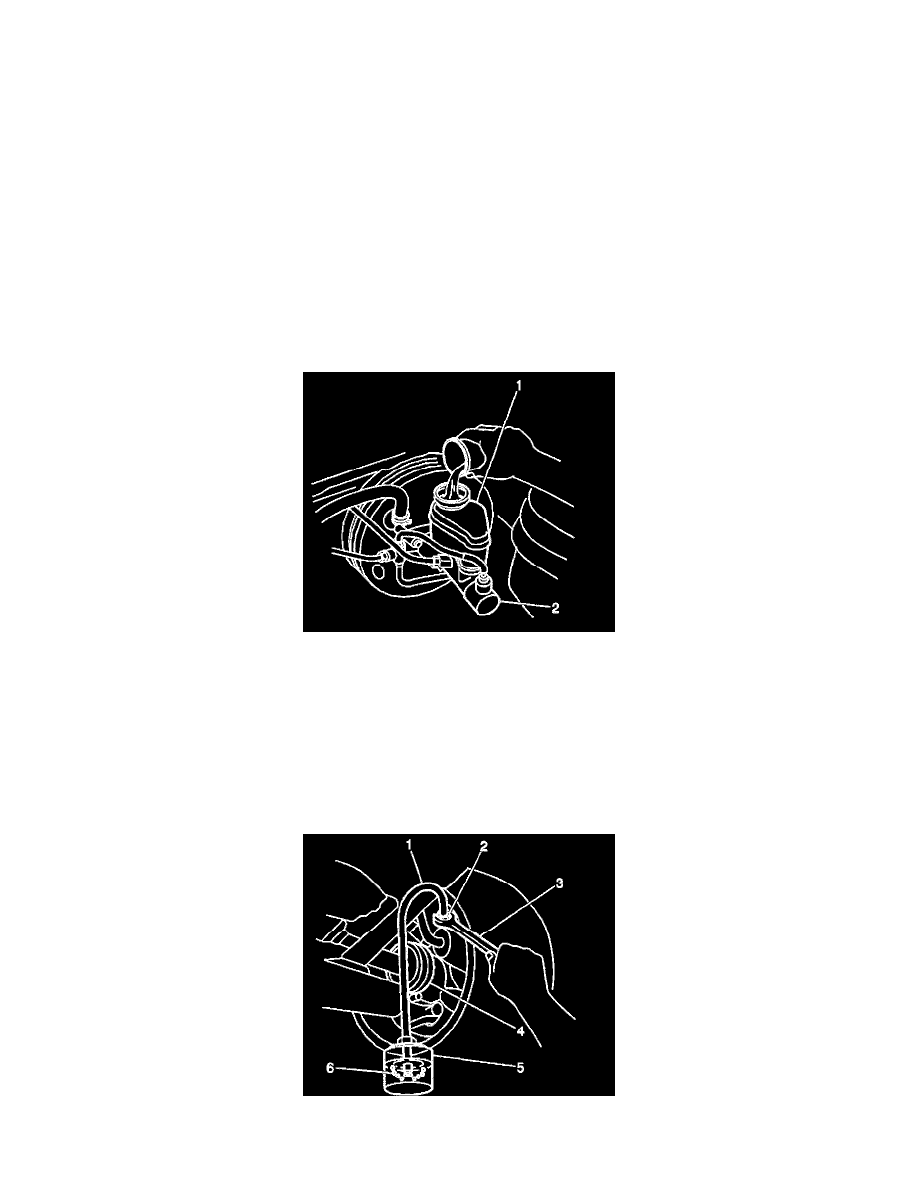Prizm L4-108 1.8L DOHC VIN 8 MFI (1998)

15. Tighten the bleeder valve (2).
^
Tighten the bleeder valve to 8.3 Nm (86 in. lbs.).
16. Ask an assistant to slowly release the pedal.
17. Ask an assistant to depress and release the brake pedal.
18. Bleed the hydraulic brake system until the following conditions are met:
^
The brake pedal application does not feel spongy.
^
There is no air in the brake pipes or hoses.
^
There are no air bubbles in the clear fluid container (6).
19. Ask an assistant to depress the brake pedal several times.
20. Inspect the hydraulic brake system for fluid leaks.
21. Remove the transparent hose (1) from the bleeder valve (2).
22. Remove the box end wrench (3) from the bleeder valve (2).
23. Repeat the hydraulic brake system bleeding procedure at each required wheel in order to bleed the entire hydraulic brake system.
24. Lower the vehicle.
PRESSURE BLEEDING
^
Tools Required
-
J 39801 Brake Bleeder Adapter
1. If the vehicle is equipped with ABS brakes and you replaced the master cylinder or the BPMV, refer to "ABS Bleed Procedure" in Brake
Bleeding.
2. Clean the reservoir cap.
3. Fill the reservoir with brake fluid, GM P/N 12377967 (or equivalent Dot 3 brake fluid) to the MAX mark on the reservoir (1).
4. Ensure that the level of the brake fluid in the reservoir is at least one-half full during the bleeding operation.
5. Install the J 39801 to the master cylinder reservoir.
6. Connect the pressure bleeder to the J 39801.
7. Raise and support the vehicle.
8. Clean any dirt and foreign material from the hydraulic brake hose and from the fittings.
